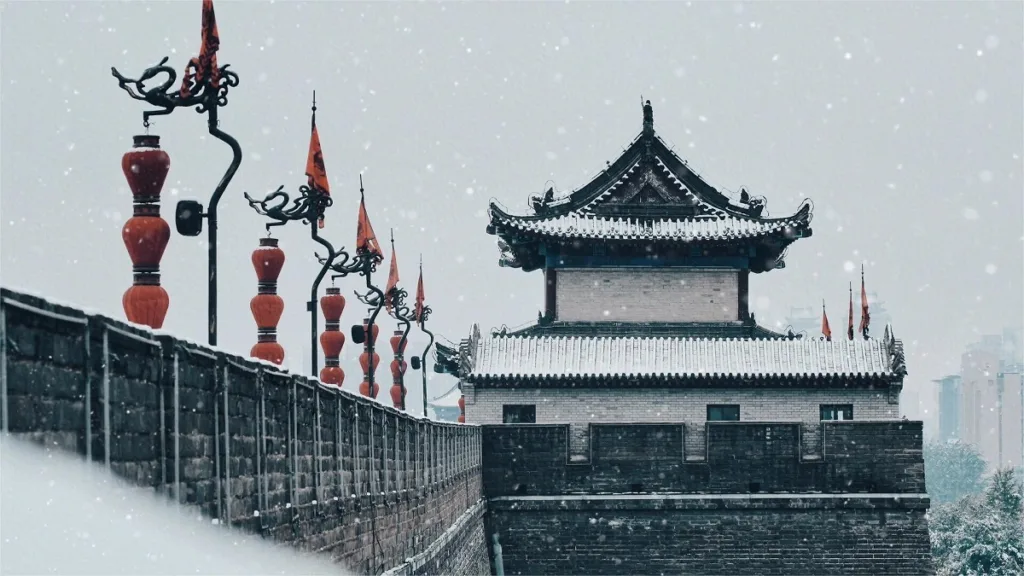Xi’an, the capital of Shaanxi Province in China, is a city steeped in history and culture, boasting a rich legacy of ancient architecture that spans thousands of years. From majestic imperial palaces to grandiose city walls, Xi’an’s architectural treasures offer a glimpse into its illustrious past and enduring heritage. Let’s embark on a journey to discover the timeless charm of Xi’an’s ancient architecture, where each structure tells a story of dynasties long gone and civilizations that have left an indelible mark on the cityscape.
1. Terracotta Army Museum: A UNESCO World Heritage Site and one of the most iconic attractions in Xi’an, the Terracotta Army Museum is home to thousands of life-sized terracotta warriors, horses, and chariots crafted over two millennia ago to accompany Emperor Qin Shi Huang in the afterlife. Marvel at the intricate details of these clay soldiers and witness the awe-inspiring spectacle of China’s first emperor’s burial site.
2. Xi’an City Wall: Dating back to the Ming Dynasty, the Xi’an City Wall is one of the best-preserved ancient city walls in China, encompassing the old city center and spanning over 13 kilometers in length. Rent a bicycle or take a leisurely stroll atop the wall to admire panoramic views of Xi’an’s skyline and surrounding neighborhoods, and appreciate the architectural ingenuity of this ancient defensive structure.
3. Big Wild Goose Pagoda: Built during the Tang Dynasty, the Big Wild Goose Pagoda is a towering masterpiece of Buddhist architecture, soaring seven stories high and adorned with intricate carvings and Buddhist scriptures. Explore the pagoda’s inner chambers and ascend to its upper levels for commanding views of the city below, and discover the enduring spiritual legacy of ancient China.
4. Small Wild Goose Pagoda: Adjacent to the Big Wild Goose Pagoda, the Small Wild Goose Pagoda is another architectural gem from the Tang Dynasty, renowned for its elegant design and delicate ornamentation. Wander through the pagoda’s tranquil courtyard, admire its graceful architecture, and contemplate the profound influence of Buddhism on Xi’an’s cultural landscape.
5. Huaqing Palace: Nestled at the foot of Mount Li, Huaqing Palace is a historic hot spring resort that has welcomed emperors and dignitaries for centuries. Explore its meticulously landscaped gardens, ornate pavilions, and thermal pools, and imagine the lavish banquets and romantic legends that once unfolded within its hallowed halls.
6. Bell Tower and Drum Tower: Located at the heart of Xi’an’s old city center, the Bell Tower and Drum Tower are iconic symbols of the city’s historic legacy. Admire their grandeur and architectural beauty, and marvel at the ancient timekeeping instruments that once regulated life within the city walls.
7. Great Mosque of Xi’an: Hidden amidst the bustling Muslim Quarter, the Great Mosque of Xi’an is a serene sanctuary of Islamic architecture and culture. Explore its tranquil courtyards, ornate prayer halls, and exquisite calligraphy, and experience the harmonious blend of Chinese and Islamic influences that define this unique place of worship.
8. Famen Temple: Located outside the city center, Famen Temple is renowned for housing the finger bone relic of the Buddha, a sacred artifact revered by Buddhists around the world. Explore the temple’s intricate pagodas, ornamental halls, and serene gardens, and immerse yourself in the spiritual ambiance of this revered pilgrimage site.
9. Banpo Neolithic Village: Journey back in time to prehistoric China at the Banpo Neolithic Village, where archaeologists have uncovered the remains of an ancient settlement dating back over 6,000 years. Explore reconstructed dwellings, communal buildings, and burial sites, and gain insight into the daily lives and rituals of Xi’an’s earliest inhabitants.
10. Daming Palace: Once the imperial residence of the Tang Dynasty emperors, Daming Palace was a sprawling complex of palaces, halls, and gardens that rivaled the Forbidden City in Beijing. Although largely in ruins today, the site offers glimpses of its former splendor and significance in Chinese history.
11. Forest of Stone Steles Museum: Home to thousands of ancient stone steles inscribed with Confucian classics, historical records, and literary works, the Forest of Stone Steles Museum is a testament to Xi’an’s role as a center of scholarship and learning throughout the ages. Explore its vast collection of engraved tablets, rubbings, and calligraphy, and gain a deeper appreciation for China’s rich cultural heritage.


